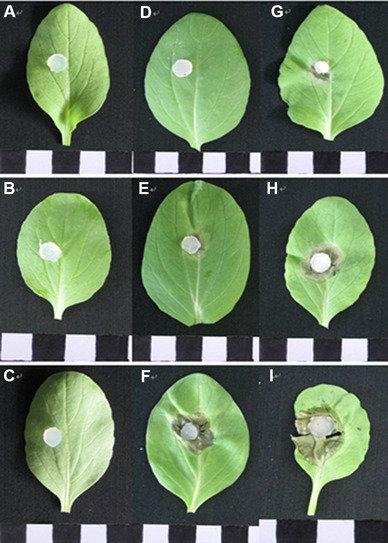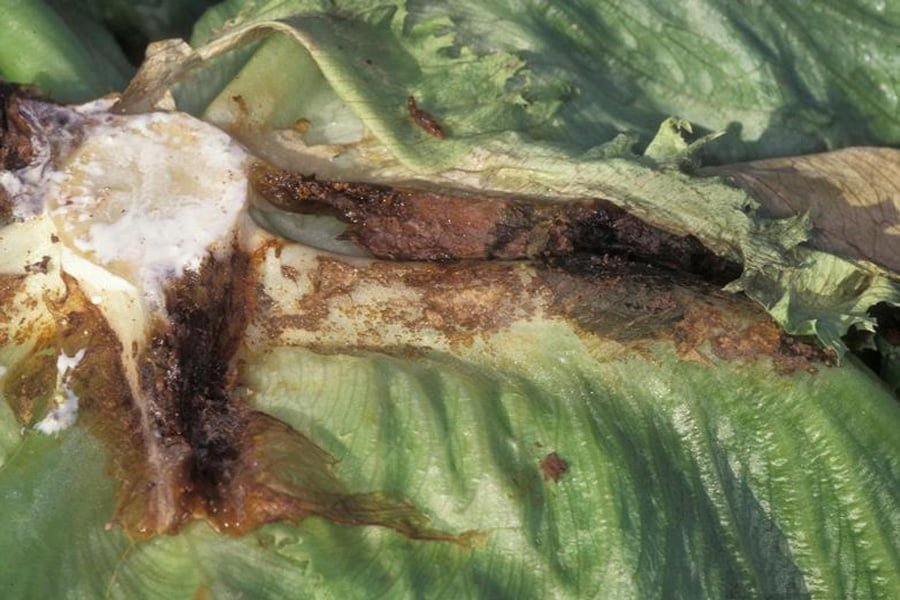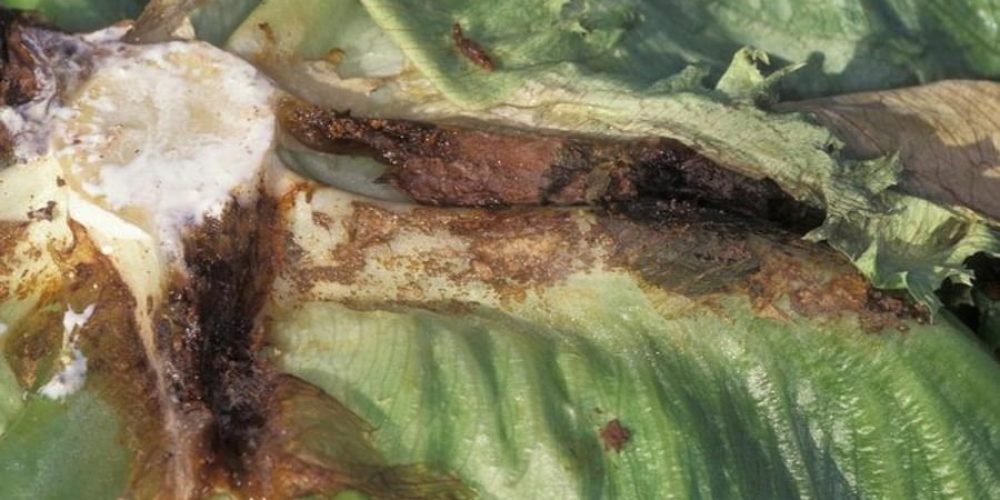Botrytis mold (gray mold)
Botrytis cinerea: scientific name
Type of disease: fungal
Cause: Botrytis cinerea, full-stage Botryotinia fuckeliana
life cycle:
Spore germination is greatly stimulated by low concentrations of simple sugars, such as glucose and fructose, as well as amino acids. In the spring, stony bodies and mycelium grow and give rise to conidia, which are the primary inoculum for foliar infection. The fungus may be small conidia, and these small spores are released from single hyphae from old hyphae, which are from a single cell formed in the chains of the apothecia fruit. Usually germs do not penetrate through stomata, but infection occurs through wounds. At the end of the flowering process, the fungus grows on the flower cover, and the fruit formation process fails, and then the flower clusters become infected and appear in the form of brown spots that turn black, and before the end of summer, these spots extend to surround the entire stem and lead to infection of the fruit clusters, which leads to their fall.
Cause of disease
These symptoms are caused by the soil-borne fungus Botrytis cinerea, which can grow and infect all parts of the plant. Symptoms are enhanced by the presence of wet weather with frequent rainfall and cold temperatures. The optimum temperature recorded for fungal growth, plant colonization, and disease development is 15 to 20 degrees Celsius. . Symptoms first appear on leaves or parts of the plant that have been mechanically injured during field work or through hail or frost. The lower leaves are most susceptible to infection. Excessive watering and dense shade may increase the level of the disease by providing a moist, dense environment conducive to fungal growth.
Families:
. It is also found in apples, grapes, beans, peppers, hot peppers, eggplants, cherries, peas, cucumbers, pumpkin, zucchini, tomatoes, cabbage, potatoes, Indian peas and red peas, peas and chickpeas, almonds, strawberries, currants, citrus citrus, peanuts, mango, sugar beets, pomegranates, canola, lentils, pistachios.
Suitable circumstances:
The appropriate temperatures for the growth and development of fungi in an optimal manner are between 18 and 23 degrees Celsius and humid weather. For bacteriosis, the release of spores and their germination, and for consolidation of the infection, the fungus is active at low temperatures and causes major losses in crops stored for a long period in warehouses, even if the temperatures reach zero.
Symptoms:
. Massive dark gray growths can be observed on the leaves, fruits or pods.
. The presence of spots of fungal growth on the tissues.
. Parts of the plant or the plant as a whole may wither, turn brown, and die (drop).
. Occasionally, branch dieback and canker formation have been observed on woody trees.
. Massive growth of mold on leaves, branches, pods or fruits is the most striking symptom. Initially, scattered tin or brown, water-soaked areas appear on parts of the plant that are in contact with the soil or that have been infected. Numerous hairy, gray to brown spots of fungal growth develop on these tissues. Later, mold grows on the younger fruits and pods, causing Gives it a curly look. Instead, symptoms appear during storage. In both cases, huge losses can occur. Leaf base and stem rots can cause complete crop failure in susceptible varieties of horticultural crops (fall). Occasionally, shoot dieback and canker formation are observed on woody crops.
 A – C Sclerotinia sclerotiorum and Botrytis cinerea infection of Chinese cabbage leaves after inoculation with fungus B and 48 and 72 hours after inoculation with 24 – 24, 48 and 72 hours in the control treatment are shown, respectively: G – show 24, 48 and 72 hours after inoculation with cinerea
A – C Sclerotinia sclerotiorum and Botrytis cinerea infection of Chinese cabbage leaves after inoculation with fungus B and 48 and 72 hours after inoculation with 24 – 24, 48 and 72 hours in the control treatment are shown, respectively: G – show 24, 48 and 72 hours after inoculation with cinerea

Gray mold spreads from the root to the bottom of the cabbage leaves
 Symptoms of gray mold disease on cabbage
Symptoms of gray mold disease on cabbage
Preventative measurements
. Use sound planting materials from certified sources.
. Resistant plants or tolerant varieties of crops.
. Early or early maturing plant varieties.
. Maintain a reasonable distance between plants.
. Ensure the plants are lined up straight.
. Use mulch to weaken the fungal life cycle and reduce inoculum.
. Ensure good drainage of the site and avoid inappropriate irrigation.
. Do not over fertilize crops.
. Be careful not to injure plants when working in this field.
. Monitor the field and remove decaying plant tissue.
Recommendations:
We recommend applying organic control in the early stages of the disease or when the crop is close to harvest. In the more advanced stages of the disease, please use chemical control. It is not recommended to mix or use different products at the same time.
Organic control
Biocides containing the competitive fungicide Trichoderma harzianum are effective against gray mold on a wide range of crops. Products based on Streptomyces griseovirides are also available for use on lettuce.
Chemical control
Always follow integrated approaches with preventive measures together with biological resistance, if available. Controlling this fungus is difficult because it may colonize host plants close to the time of harvest. Therefore, the use of chemicals that leave toxic effects is prevented. In the event of early infection, foliar spraying with chlorothalonil can be used to control its spread. Other fungicides containing fluazinam and thiophant methyl can also be effective. The development of resistance may be common when fungicides are used extensively.
the reviewer:
Younis Youssef Mullan, Salah Al-Din Al-Husseini Muhammad, and Yasser Eid Ibrahim (2008) Diagnosis of fungal diseases and methods of controlling them.
Author: Yunus Yusuf Mullan and others
Book or source: Diagnosing fungal diseases and methods of controlling them
Part and page: pp. 201-205
Section: Agriculture / Plant pests and diseases and methods of controlling them / Plant diseases and their causes / Fungi and the diseases they cause to plants /
Gene McAvoy is the Fourth Regional Botanical Extension Agent Emeritus for the University of Florida Institute of Food and Agricultural Sciences. In addition, he is the president of his own company Have Gun Will Travel Agriculture Consulting. See all the author's stories here.



